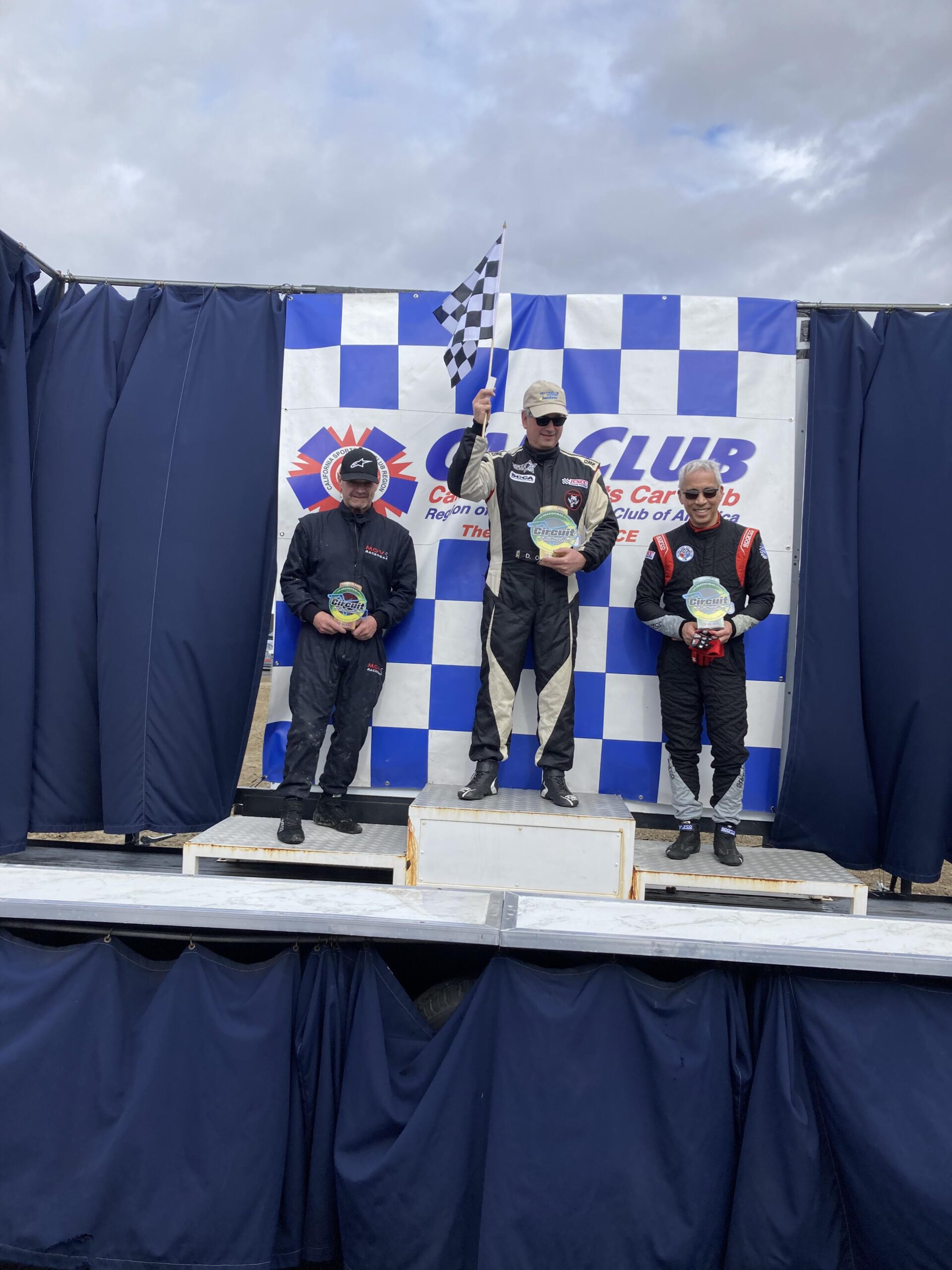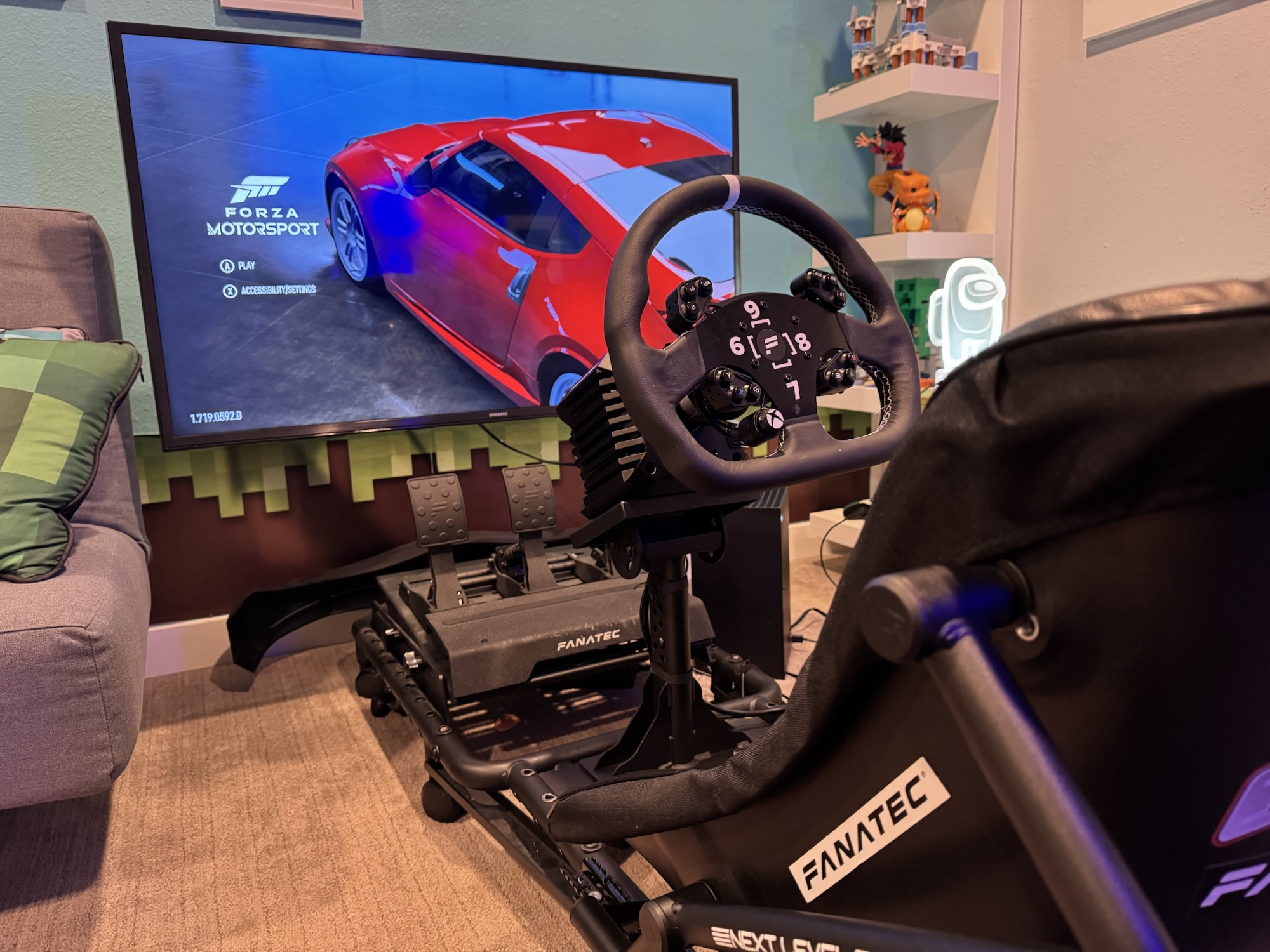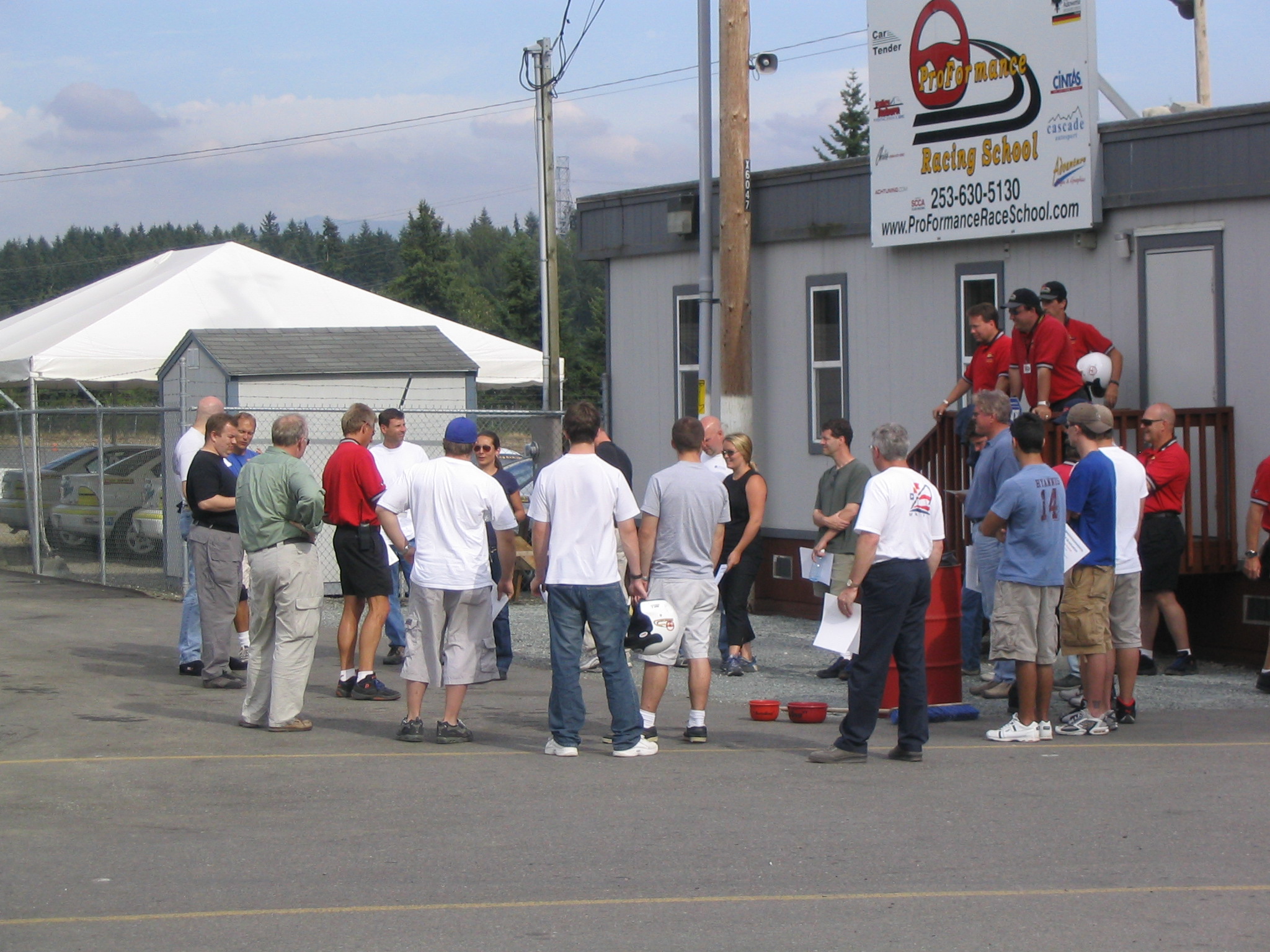
The 2025 Racer on Rails SCCA racing program kicked off in California at The Circuit, the newly built racecourse at Buttonwillow Raceway Park. This was a weekend of firsts—not just for us, but for the entire everyone, as we took part in the first-ever sanctioned race on the new track!
Everything about The Circuit was new; new track, new tire brand for both slick and wet setups, new coaching program, new competitors, and new adventures. Our drivers and crew had plenty to learn, and we approached the weekend with specific goals and a detailed game plan for each driver. With two days of testing, racing, and strategy calls, the team made incredible strides, achieving personal bests, podiums, and a 1-2 finish in Race 2 on Sunday.
Meet the team

Ron Tanemura & Car Chief Reid Morris
#63 SE46 BMW 330i | SCCA Class – Touring 3 (T3)
- 2024 ICSCC SPM Class Champion 🏆
- First-ever SCCA U.S. Majors Tour event
- Entering Racer on Rails’ SCCA Competition Program
Ron has been racing with Racer on Rails in the Pacific Northwest for a few years, but this was his first-ever SCCA Majors Tour race and his fist season working full time with Reid. After earning the 2024 ICSCC SPM Class Championship, he stepped up to challenge himself further in national competition. This weekend was a big new challenge —a brand-new track, new competitors, and a stomach bug. But Ron came ready to party, and nothing was stopping him.

David Orem & Car Chief Rene Perez
#6 BMW Z4 M Coupé | SCCA Class – Touring 3 (T3)
- Touring 3 podium finisher
- Has mastered Heel-Toe Shifting during the off-season
- Goal-Oriented approach
Dave returns to our SCCA program looking to reach the sharp end of the T3 field. With a fresh rebuild on his Z4 M Coupé including a stunning new vinyl wrap, Dave arrives fit, focused and determined. The pairing showed steady progression all weekend, culminating in a checked bag fee on the flight home for a bag containing new hardware.

Simon Asselin & Car Chief Jordan Allen (“The Doctor”)
#81 Porsche Motorsport 991.2 GT3 Cup | SCCA Class – GT2
- 2023 SCCA Touring 3 Points Champion
- Racing in one of the most competitive SCCA grids, GT2
- Third-fastest GT2 lap time of the weekend
Simon and Jordan have been working together for multiple seasons, and after a strong debut year in GT2 last season, they returned to challenge for the podium in 2025. This series offers the challenge of multi-class race groups including a large Spec Corvette field, Simon’s consistency and pace kept him at the front of the GT2 field, all while navigating the pack of slower class cars.

Friday Test Day – Cold Starts and First Impressions
We arrived at The Circuit before sunrise on Friday, greeted by well-below-freezing temperatures and frost covering everything—cars, buildings, and the track. Luckily, the team had already set up the night before, allowing us to jump straight into unloading and prepping for the 9:00–9:30 AM test session.
By the time the first cars hit the track, the frost had lifted, and the sun was breaking through. This was the first real-world drive for any of our drivers on the new layout, making it a crucial day of adaptation.
Driver Progress:
- Simon Asselin: Locked in the 1:45 range, pushing near the expected top pace.
- Dave Orem: Improved into the 2:06 range, showing steady progress.
- Ron Tanemura: Battling fatigue, made strides before sitting out the final session to recover.
With simulator prep translating well to reality, we ended the day confident in the team’s progress heading into Saturday.
Saturday – Practice, Qualifying & Race 1
Saturday morning started with feedback sheets from Tyler Campbell, analyzing Friday’s data to pinpoint one or two focus areas for each driver. The goal: apply the learnings immediately in the morning practice and first qualifying session.
Ron had an early spin during morning practice, leading to the discovery of a failing battery. Missing part of practice, he rebounded well in qualifying. Dave executed perfectly, shaving seconds off his previous best lap.
Simon struggled with traffic in qualifying but still secures a start from row 2.
Saturday Qualifying Results:
- Touring 3: Dave P2, Ron P5
- GT2: Simon P3
Saturday Race 1 – Making History
T3 Race 1:
The first-ever sanctioned race on The Circuit was a split start, with Spec MX-5 Cup cars leading and Touring 3 cars behind. The race brings improving track conditions and with the help of lots of data and video analysis, defined goals and executing on our action plans, Dave charges to a 2nd place finish, while Ron continues to improve despite still recovering from food poisoning, finishing the race in 4th.
GT2 Race 1:
Better track conditions and cool air set the stage for Race 1 in GT2. Simon has some great racing of his own, as he trades positions with a few GT2 cars before finishing the race in 4th place.

Sunday – Morning Qualifying, Wet Track, Big Decisions
Early morning rain rolls in leaving us with a damp but drying track. Our turn is up for T3 qualifying and mixed conditions still exist. We are forced to make a strategy call on tires, so we go to Jordo at our Weather Desk. The decision is slicks, and it pays off as the track conditions improve and we begin finding speed in quali #2.
Sunday Qualifying Results:
- Touring 3: Dave P2, Ron P3
- GT2: Simon P3
Touring 3, Race 2 – The 1-2 punch!
The race begins with a 6-car battle into the first corner making for an exciting start. Dave sets the pace in class, while Ron, after fending off some light contact from another competitor, sticks to the the Z4M’s bumper and RoR takes a 1-2 finish in Race 2 for Touring 3. BOOM!
GT2 Race 2:
Simon has a solid start and runs in P3, involved in a 3-car battle for most of the race. After a restart from a full course caution, several cars experience wheelspin, resulting in a loss of 2 spots. Despite the setback, he fights his way back up, improving his personal best lap time by nearly three seconds (1:44.5) and finishes in P4.
Wondering what it’s like on the new circuit? Check out a fast lap in Simon’s Porsche 911 GT3 991.2 Cup Car

Final Thoughts – Goals, Smiles, Memories
As we packed up, we reflected on an incredible opening weekend. The new track, unpredictable conditions, and intense racing made for an unforgettable event.
- Dave & Ron delivered a 1-2 finish in Touring 3.
- Simon clocked the third-fastest GT2 lap of the weekend.
- No major damage, only progress.
Now, we prep for Race 2. Stay tuned!
#Goals #Smiles #Memories












